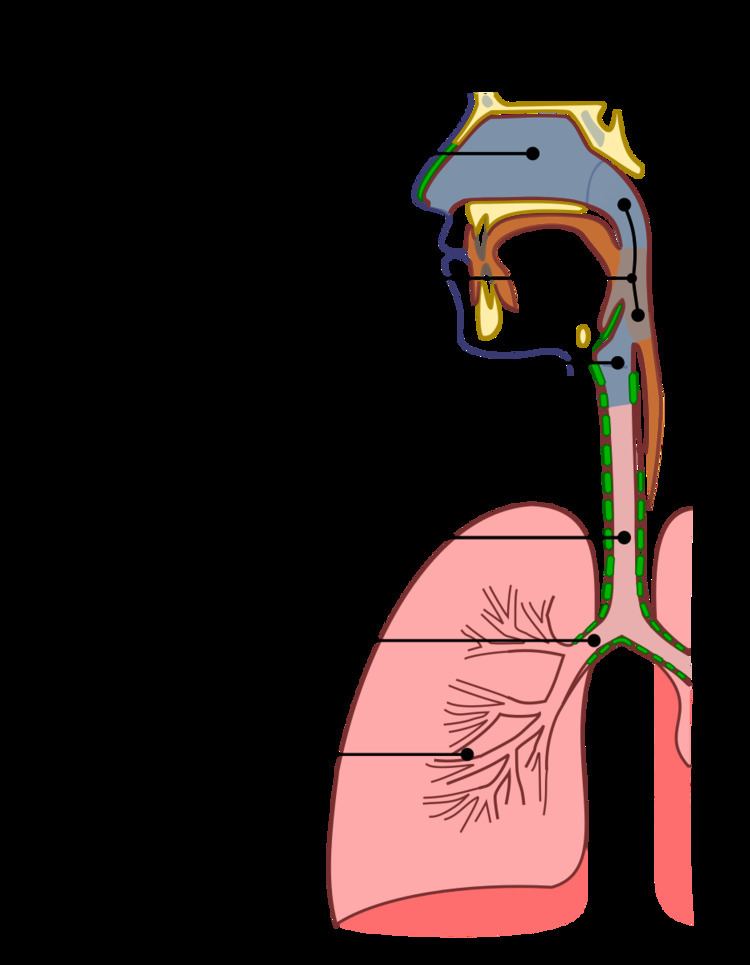 | ||
Respiratory tract infection refers to any of a number of infectious diseases involving the respiratory tract. An infection of this type is normally further classified as an upper respiratory tract infection (URI or URTI) or a lower respiratory tract infection (LRI or LRTI). Lower respiratory infections, such as pneumonia, tend to be far more serious conditions than upper respiratory infections, such as the common cold.
Contents
Upper respiratory tract infection
Although some disagreement exists on the exact boundary between the upper and lower respiratory tracts, the upper respiratory tract is generally considered to be the airway above the glottis or vocal cords. This includes the nose, sinuses, pharynx, and larynx.
Typical infections of the upper respiratory tract include tonsillitis, pharyngitis, laryngitis, sinusitis, otitis media, certain types of influenza, and the common cold. Symptoms of URIs can include cough, sore throat, runny nose, nasal congestion, headache, low grade fever, facial pressure and sneezing.
Lower respiratory tract infection
The lower respiratory tract consists of the trachea (wind pipe), bronchial tubes, the bronchioles, and the lungs.
Lower respiratory tract infections are generally more serious than upper respiratory infections. LRIs are the leading cause of death among all infectious diseases. The two most common LRIs are bronchitis and pneumonia. Influenza affects both the upper and lower respiratory tracts, but more dangerous strains such as the highly pernicious H5N1 tend to bind to receptors deep in the lungs.
Diagnosis
Rapid viral testing in the emergency department for children with acute febrile respiratory infections does not reduce the rates of antibiotic use, blood testing, urine testing or length of hospital stay. However, the relative risk reduction of chest x-ray utilization in children screened with rapid viral testing is 77% compared with controls. In 2013 researchers developed a breath tester that can promptly diagnose lung infections.
Prevention
Normal surgical masks and N95 masks appear equivalent with respect to prevention respiratory infections.
